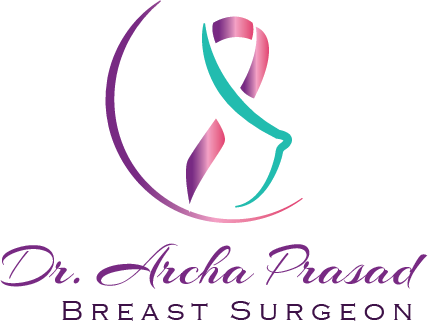Introduction:
Fat grafting has gained significant attention in recent years as a safe, effective, and natural method for enhancing and reconstructing various parts of the body. As an innovative technique, fat grafting provides a solution for those seeking subtle volume enhancement, improved body contouring, and even breast reconstruction. In this blog, we will analyze the essentials of fat grafting, explore its applications in aesthetic and reconstructive surgery, and discuss the potential benefits and considerations of this transformative aesthetic procedure.
What is Fat Grafting?
Fat grafting, also known as fat transfer, is a cosmetic and reconstructive technique that involves the removal of fat from one part of the body (via liposuction) and injecting it into another area to add volume or enhance shape. The procedure uses the patient’s own fat, making it a highly biocompatible and natural option for those seeking augmentation without the use of synthetic materials such as implants.
The process typically begins with the extraction of fat from areas with excess, such as the abdomen, thighs, or flanks. The fat is then processed to remove any impurities, including blood and fluids, before being carefully injected into the desired area. Since the fat comes from the patient’s body, there is no risk of allergic reactions, which makes fat grafting an appealing choice for patients.
Fat Grafting in Aesthetic Procedures
Fat grafting is widely used in aesthetic procedures to improve facial contours, augment the breasts, and enhance body shape. Patients who prefer a more natural, subtle enhancement, often opt for fat transfer to breast over traditional implants. Fat grafting offers the advantage of softer, more natural-looking results, particularly in areas where the goal is to restore lost volume due to ageing, weight loss, or other factors.
In facial procedures, fat grafting is used to fill in hollow areas around the cheeks, temples, or under the eyes, providing a more youthful appearance. It is also a popular choice for hand rejuvenation, where it adds volume to the back of the hands, reducing the appearance of veins and tendons associated with ageing.
Fat Grafting Breast Procedures
Fat grafting breast procedures are increasingly sought after by women looking for natural breast augmentation. Unlike traditional breast implants, fat transfer to the breast offers a moderate increase in size with a more natural feel and appearance. The procedure is often favoured by those who want to avoid the potential risks of implants, such as capsular contracture or implant rupture.
In a fat transfer to breast procedure, fat is harvested from the patient’s body, typically from areas with excess fat, and injected into the breasts to enhance their shape and size. This approach can also be used in combination with other procedures, such as a breast lift, to achieve a comprehensive aesthetic improvement. While the results are generally long-lasting, it’s essential to note that some of the transferred fat may be reabsorbed by the body over time, so additional sessions may be necessary to maintain the desired volume.
Fat Grafting in Reconstructive Surgery
Beyond aesthetics, fat grafting plays a crucial role in reconstructive surgery, particularly in breast reconstruction for patients who have undergone mastectomies due to breast cancer. Fat grafting is often used to restore natural breast contours and correct defects or irregularities following mastectomy or lumpectomy.
For patients seeking a completely natural reconstruction, fat grafting is sometimes used in conjunction with flap procedures, such as the DIEP flap (Deep Inferior Epigastric Perforator flap). In the DIEP flap procedure, fat, skin, and blood vessels are taken from the lower abdomen and transferred to the chest to reconstruct the breast. Fat grafting can be used to refine and enhance the results, ensuring a more symmetrical and natural appearance. This combination of techniques offers patients a highly natural option for reconstruction without the need for implants.
Fat grafting is also used in smaller, corrective surgeries. It can fill in areas where previous breast reconstruction surgeries may have resulted in dents or irregularities, providing a smoother, more aesthetically pleasing result.
Advantages of Fat Grafting
The primary advantage of fat grafting is that it uses the patient’s own tissue, making it one of the safest and most biocompatible aesthetic procedures available. Here are several key benefits of fat grafting:
- Natural Results: Since fat grafting uses the patient’s own fat, the results tend to look and feel more natural compared to synthetic implants or fillers.
- Dual Benefit: Fat grafting provides the dual benefit of body contouring. Fat is removed from areas with excess fat (such as the abdomen or thighs) and transferred to areas where volume is needed, resulting in a more balanced, contoured physique.
- Minimal Risk: The risk of allergic reactions or rejection is virtually eliminated because the fat used in the procedure comes from the patient’s own body.
- Long-Lasting: While some fat may be reabsorbed by the body, the fat that remains after a few months tends to be permanent, offering long-lasting results.
- Versatility: Fat grafting can be used for a variety of aesthetic and reconstructive procedures, including facial rejuvenation, breast enhancement, and post-mastectomy reconstruction.
Considerations and Limitations
Although fat grafting has numerous benefits, there are important considerations to keep in mind. One of the main limitations is the unpredictable nature of fat survival. Typically, 50-70% of the transferred fat survives, while the rest is absorbed by the body. As a result, patients may require additional sessions to achieve their desired volume.
Another consideration is the necessity of having enough donor fat for the procedure. For very thin patients, finding adequate fat for harvesting can be challenging, which may limit the use of fat grafting in such individuals.
Additionally, it’s important to understand that fat grafting is a more subtle augmentation option, especially for breast graft procedures. Patients seeking a dramatic increase in breast size may still need to consider implants as a more effective option.
For reconstructive surgery patients, the combination of fat grafting with other advanced techniques, such as the DIEP flap, ensures a natural and durable outcome, but it requires skilled surgeons and careful planning.
Cost of Fat Grafting Procedures
The cost of fat grafting procedures can vary widely depending on the surgeon’s experience, the complexity of the procedure, and the amount of fat being transferred. Fat grafting breast procedures generally cost more than facial fat transfer due to the larger volume of fat required and the complexity of the procedure. However, fat grafting is generally considered a worthwhile investment for those seeking natural, long-lasting results.
Conclusion
Fat grafting offers a revolutionary approach to both aesthetic procedures and reconstructive surgery, providing natural, long-lasting results with minimal risk of complications. Whether it’s being used for facial rejuvenation, breast augmentation, or breast reconstruction after a mastectomy, fat grafting continues to be an increasingly popular choice due to its safety, versatility, and natural results.
For patients considering fat transfer to breast or other areas, consulting with a board-certified plastic surgeon who specializes in fat grafting is essential. Surgeons experienced in DIEP flap procedures and advanced fat grafting techniques can help ensure that patients achieve the best possible outcome, whether they are seeking aesthetic enhancement or reconstructive solutions.


